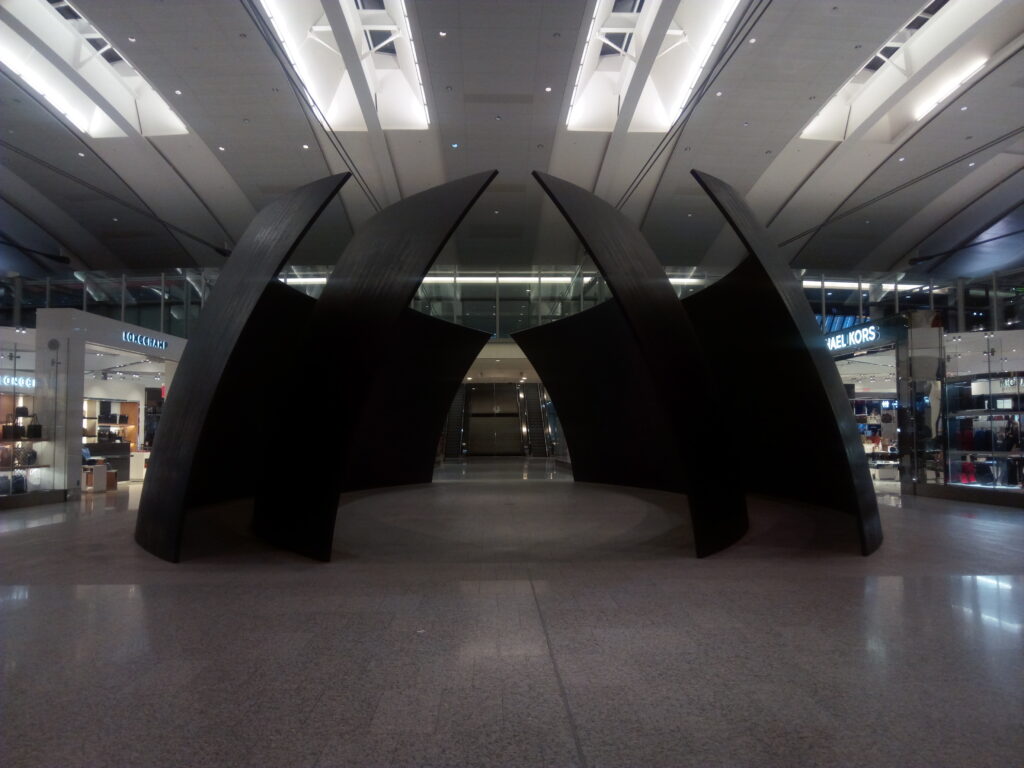On Terminals, Transience, and Tipping
I’m sipping an old fashioned in La Vie, a quiet bar in Terminal 5 at JFK airport in New York, passing the time in conversation with the bartender. Sitting at an airport bar always proves to be entertaining and has become one way for me to stave off the feeling of ennui I encounter in transit terminals. I’ve always loathed the in-between time and transitional spaces of travel. By this, I mean those empty stretches of time spent between destinations: from waiting to board, flying or riding, arriving at the destination, and the spaces they encompass. Living in these moments feels wasted, even tedious. I’ve found it easy to neglect the hubs for constant movement. I would get caught up in the motion so that when it was time to stop or pause, I’d find it difficult to relax. I wanted to be anywhere but there, preferably at my destination. AMS, CDG, CGN, DEN, DUB, KEF, PHX, LAX, LGA, every Union or Central Station from New York to Berlin to Tallinn and Prague, and all the smaller hubs. Places I have little memory of because I was moving too fast and failed to be mindful. If I had a portal, I’d use it.
What I’ve always loved about travel is the way it disrupts routine and forces a person to let go of so many things: daily habits, routines, preconceived notions, prejudices. It challenges, opens, and expands one’s mind. A person is thrust into engagements outside their comfort zone; one must adapt to new rules. I’ve found the challenge of travel simultaneously exciting and exhausting. With that said, it’s helped me to learn and practice what grounds me in the present and bring my awareness to the fore (beyond a morning meditation routine). Active listening and consciously creating connections with people in conversation, sketching, and walking have heightened my self-awareness. I always keep a notebook or sketchbook on my person. They’re an appendage to my person. The places I’ve sketched stand out in memory and hold importance over others, especially in the in-between spaces. Walking has played an important role in my life, and I reflect on it often. I find it akin to sketching and journalling in the moments mentioned above. By walking and wandering through terminals, I have found places I would not have otherwise discovered. Wandering, by design, puts me in a mode of creative play and exploration. A physical seek and find that forces me to focus on what is (or is not) around me. It’s through acts like sketching, journalling, and walking that I’ve come to enjoy the in-between times and transitional spaces for what they can become: moments to reflect, learn, relax, take notice. I’ve chanced upon galleries, displays, quiet cafes, and cozy bars like La Vie. I’ve started to collect some of my most memorable stories while waiting to move, be harried and carried away to my next destination.

As I sip my old fashioned, the bartender tells me he’s been working for the airport’s service industry for over 10 years and how much it and the people served by it have changed. “It used to be a great company. I’ve worked in this bar a few years”. The bar is small, with a large selection of alcohol. It wraps around in an L shape, and there are a few tables up front. It’s an easy place to walk in and take a seat. I hop onto a barstool and position myself to have a view of the counter and the terminal hallway. There’s an espresso machine on the back counter, with cups and saucers stacked high next to it. “Oh, there’s no espresso. The coffee machine is just for show”, the bartender says, tracking my eyes to the machine. The sign on the wall outside the entrance advertises fresh, specialty coffee, but not today. Not ever. The bartender assures me that he can get coffee from next door, “And Starbucks is to the right”. In the first 20 minutes we talk, he turns away multiple people, repeating the line like a mantra, “The machine is broken, it’s just for show. And no tea”, he adds. It’s routine non-service at this point. I tell him I’m looking for scotch whiskey, anyway. “Lagavulin, if you have it?” He informs me that every bar has the same options because it’s all owned by the same company, so “You won’t find anything different”. Besides, he adds, “You don’t want the scotch. It’s 40 dollars a shot”. I ask him what he can make, any classics. “Anything on the online menu with some variation”.
The menu is accessed via a QR code, and it’s the bane of the bartenders’ existence. And another thing that turns potential customers away. We talk drinks while he works to bring the price down. Finally, “I make a great old fashioned, it’s my go-to drink. Although, I don’t really drink anymore”. I order online, but he’s already made the drink before I can put my card information in. The drink is well-mixed and strong. While I sip, the bartender waxes on about the QR code, “Nobody tips more than 18% because it’s the highest offered option on-screen, and there are few cash transactions”. He has to go next door to break a bill for a cash tip. We talk about the city and small towns, Upstate NY. He tells me about the porn stars who’ve come through the terminal, minor celebrities, and the infinite number of cup-of-coffee baseball players to stars of the game. I’m at the airport early to catch a flight out to Costa Rica, and my time winds down with my drink. Before I leave, I calculate a 20% tip. I make my way to way to the gate, take a seat, and pull out my notebook to write while I wait out the final 30 minutes to boarding time.
